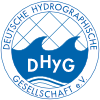HN Ausgaben wählen
- HN 132 (9)
- HN 131 (17)
- HN 130 (10)
- HN 129 (8)
- HN 128 (10)
- HN 127 (6)
- HN 126 (10)
- HN 125 (11)
- HN 124 (8)
- HN 123 (10)
- HN 122 (9)
- HN 121 (10)
- HN 120 (7)
- HN 119 (10)
- HN 118 (7)
- HN 117 (10)
- HN 116 (14)
- HN 115 (10)
- HN 114 (6)
- HN 113 (10)
- HN 112 (7)
- HN 111 (9)
- HN 110 (9)
- HN 109 (11)
- HN 108 (8)
- HN 107 (9)
- HN 106 (7)
- HN 105 (14)
- HN 104 (6)
- HN 103 (11)
- HN 102 (8)
- HN 101 (9)
- HN 100 (13)
- HN 097 (1)
Bathymetry from multispectral aerial images via convolutional neural networks
Recently, optical approaches were applied more often to derive the depth of waterbodies. In shallow areas, the depth can be deduced mainly by modelling the signal attenuation in different bands. In this approach, it is examined how well a convolutional neural network (CNN) is able to estimate water depths from multispectral aerial images. To train on the actually observed slanted water distances, the net is trained with the original images rather than the orthophoto. The trained CNN is showing a stand-ard deviation of 3 to 4 decimetres. It is able to recognise trends for varying depths and ground covers. Problems mainly occurred when facing sunglint or shaded areas.
CNN – convolutional neural network | multispectral aerial images | orthophoto | LiDAR
- Ausgabe: HN 116, Seite 32–35
- DOI: 10.23784/HN116-04
- Autor/en: Hannes Nübel
Fusing ROV-based photogrammetric underwater imagery with multibeam soundings for reconstructing wrecks in turbid waters
Observation and monitoring of wrecks are an integral part of the duties of hydrographic offices such as BSH. A common practice consists of first surveying wrecks using vessel-based multibeam echo sound-ing systems and subsequently having divers visually inspect them. In order to provide an objective pro-cedure and set a baseline for monitoring wrecks, unmanned underwater vehicles equipped with imag-ing systems can be used to inspect wrecks and other obstructions in more details. This paper presents a workflow for combining multibeam soundings and photogrammetric point clouds generated by a ROV-based camera system. Structure from motion and image enhancement are used to obtain a colour-coded point cloud, which is then fused and scaled with the multibeam soundings, resulting in data den-sification on wrecks. Finally, the feasibility of integrating this fused data to common hydrographic prac-tice is demonstrated.
ROV | underwater photogrammetry | multibeam echo sounder | point cloud fusion
- Ausgabe: HN 116, Seite 23–31
- DOI: 10.23784/HN116-03
- Autor/en: Robin Rofallski, Patrick Westfeld, Jean-Guy Nistad, Annett Büttner, Thomas Luhmann
Coastal cliff monitoring using UAS photogrammetry and TLS
Climate change and the imminent sea-level rise mean that coastal protection is becoming increasingly important, and measures must be taken to ensure that life and important infrastructure in coastal areas are protected. An essential prerequisite for the implementation of appropriate coastal protection measures is the monitoring of endangered areas through appropriate sensor technology for the docu-mentation and quantification of damages caused. In this contribution, a practical application is intro-duced using low-cost UAS (unmanned aerial system) to perform aerial flights for the monitoring of a coastal cliff at the Baltic Sea in Germany, since cliffs are exposed to and unprotected from autumn and winter storms. In comparison to UAS-based photogrammetric monitoring with terrestrial laser scanning (TLS), the photogrammetric method showed the same accuracy, but better coverage of the investigated area and a more efficient workflow.
3D | comparison | erosion | dense image matching | DSM | landslide
- Ausgabe: HN 116, Seite 16–22
- DOI: 10.23784/HN116-02
- Autor/en: Thomas P. Kersten, Maren Lindstaedt, Klaus Mechelke
A review of airborne laser bathymetry for mapping of inland and coastal waters
Airborne laser bathymetry (ALB), an active remote sensing technique for capturing the depth and topography of shallow inland and coastal waters, is continuously evolving due to technological progress concerning sensors, platforms and data processing methods. So-called deep bathy systems with low spatial resolution but high depth penetration of up to 60 m coexist with topo-bathymetric sensors featuring small laser footprints of around 50 cm, high measurement point density of more than 20 points/m2 but limited depth penetration of about 1.5 Secchi depths. While conventional ALB sensors are typically mounted on manned aircraft and operated from flying altitudes of around 500 m, sensor miniaturisation enabled the integration of compact bathymetric laser scanners on agile unmanned aerial vehicles (UAV) operated from 50 to 150 m altitude for flexible acquisition of smaller water bodies like clear gravel-bed rivers. This in turn, initiated new applications like roughness estimation, mapping of benthic habitats, and monitoring of coastal and fluvial morpho-dynamics in high spatial and temporal resolution. Furthermore, new data processing approaches proved to enhance both accuracy and depth penetration via strict geometric modelling and sophisticated waveform processing. The paper reviews the current trends in airborne laser bathymetry and highlights the potential and restriction of this optical technique.
bathymetric LiDAR | green laser | laser scanning | ALB sensors | ALB platforms
- Ausgabe: HN 116, Seite 6–15
- DOI: 10.23784/HN116-01
- Autor/en: Gottfried Mandburger


